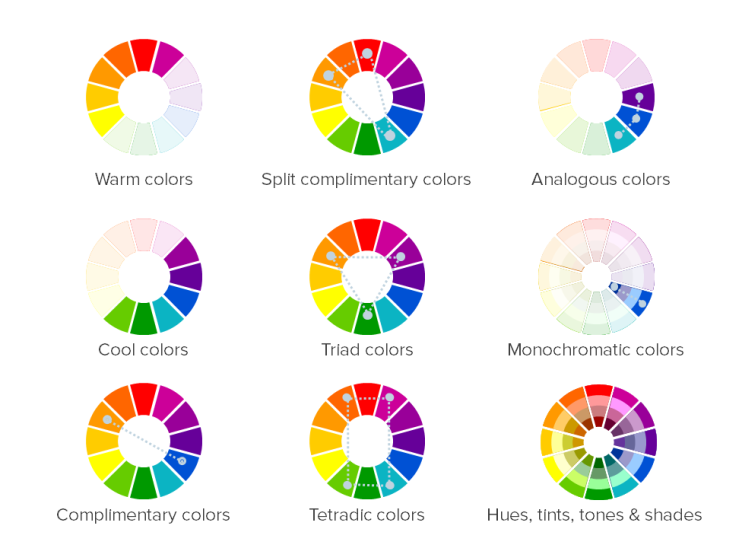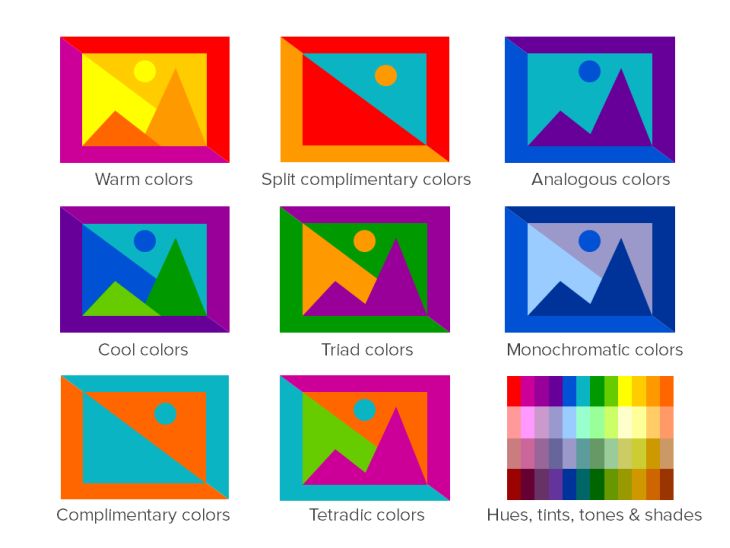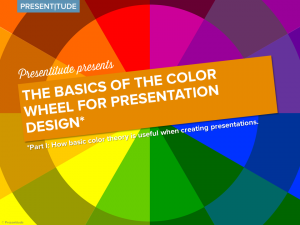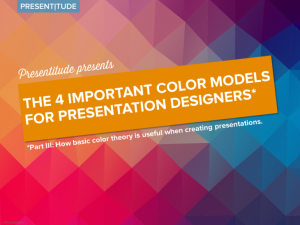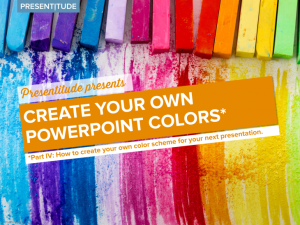The 12 colors in the color wheel can be combined in different ways. Some of the colors are considered warm, and some cold. Some are considered be complimentary in different ways. Colors next to each other are called analogous and using the same color and its tints tones and shades is called monochromatic.
We can use these color combinations in the color wheel to create beautiful color schemes for your presentations.
Warm colors
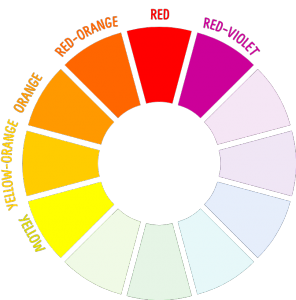
The warm colors on the color wheel are the reds, oranges and yellows. They are also called advancing colors.
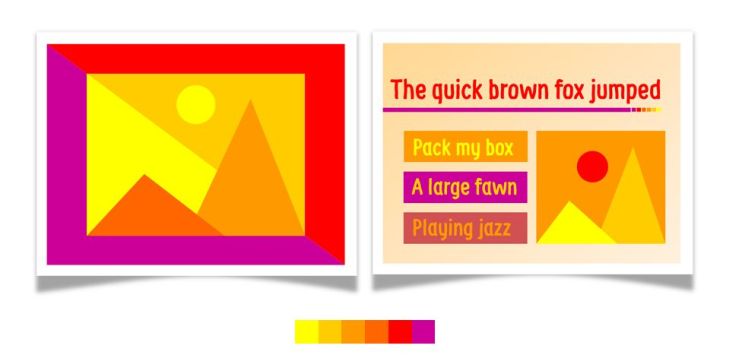
Cool colors
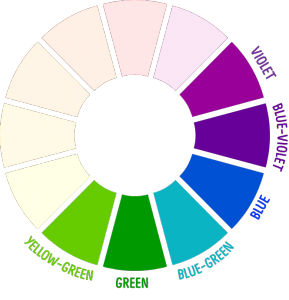 The cool colors on the color wheel are the greens, blues and violets. They are also called receding colors.
The cool colors on the color wheel are the greens, blues and violets. They are also called receding colors.
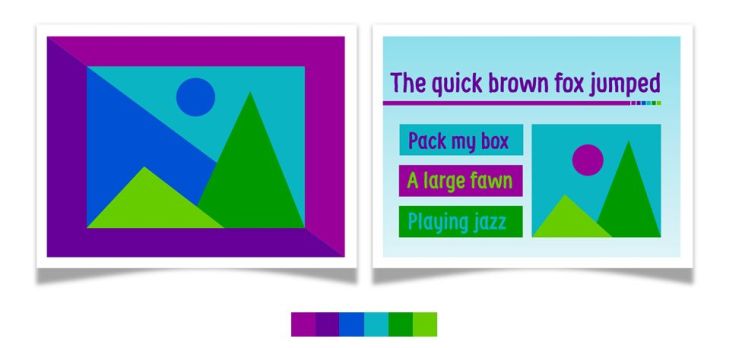
Complimentary colors
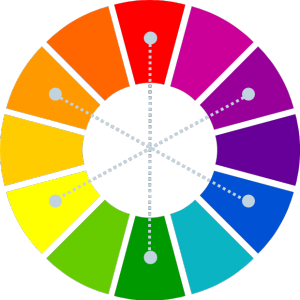 Complimentary colors are located across from each other and offer strong visual contrasts. When mixed they produce grey.
Complimentary colors are located across from each other and offer strong visual contrasts. When mixed they produce grey.
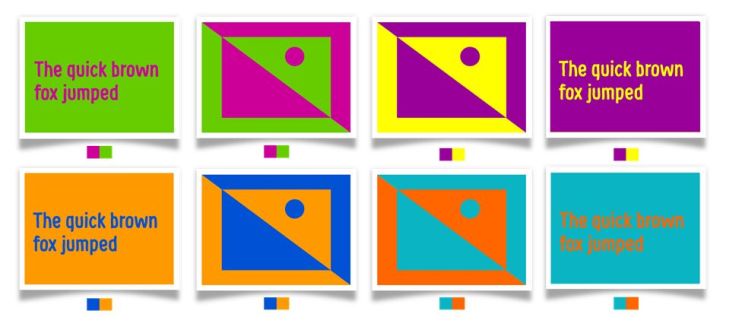
Split complimentary colors
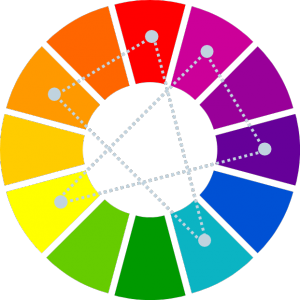 Split complimentary colors join two adjacent colors with one complimentary color, creating high contrast color combinations.
Split complimentary colors join two adjacent colors with one complimentary color, creating high contrast color combinations.
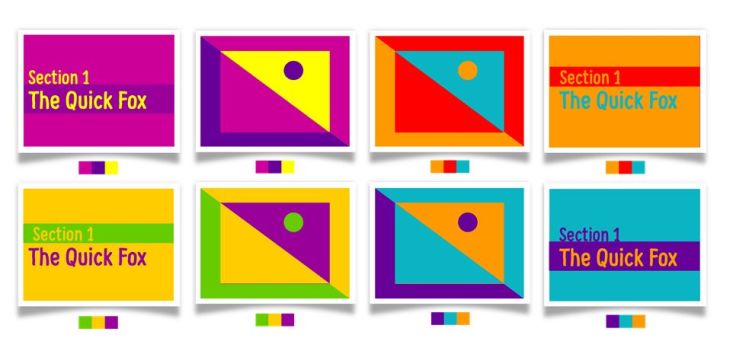
Triads and tetradic colors
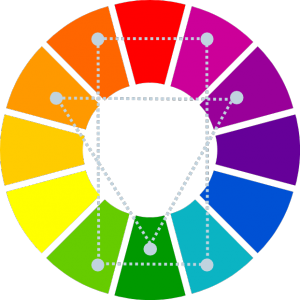 Triads and tetradic color combinations use geometric shapes (triangle and rectangle) to combine 3 or 4 colors across the color wheel.
Triads and tetradic color combinations use geometric shapes (triangle and rectangle) to combine 3 or 4 colors across the color wheel.
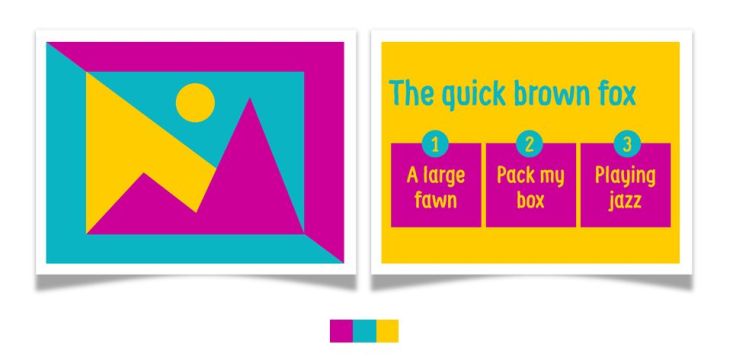
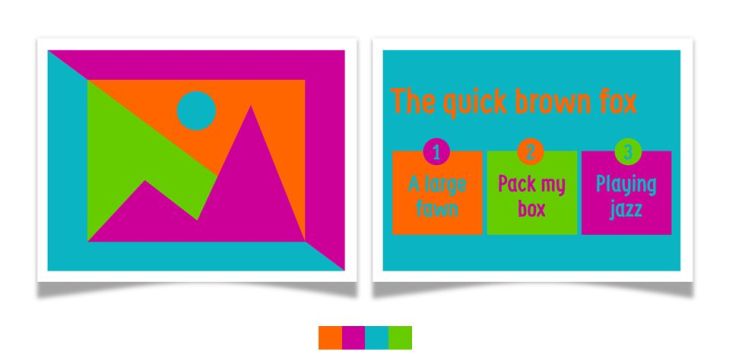
Analogous colors
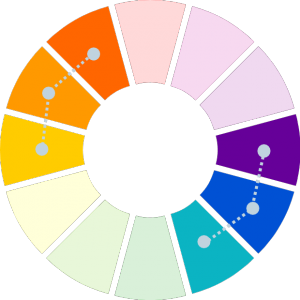 Analogous colors are colors next to each other on the wheel. They share an undertone of the same color.
Analogous colors are colors next to each other on the wheel. They share an undertone of the same color.
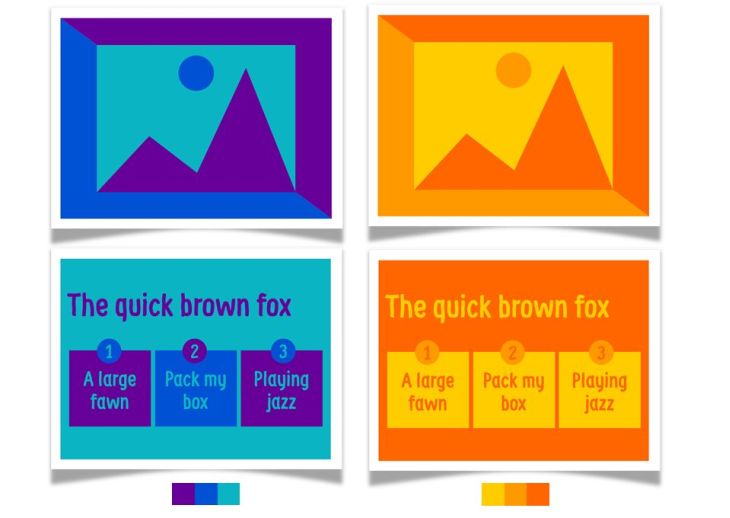
Monochromatic colors
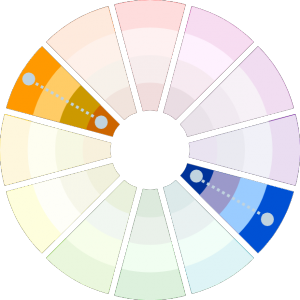 Monochromatic colors are created by different saturations (tints, tones and shades) of the same hue.
Monochromatic colors are created by different saturations (tints, tones and shades) of the same hue.
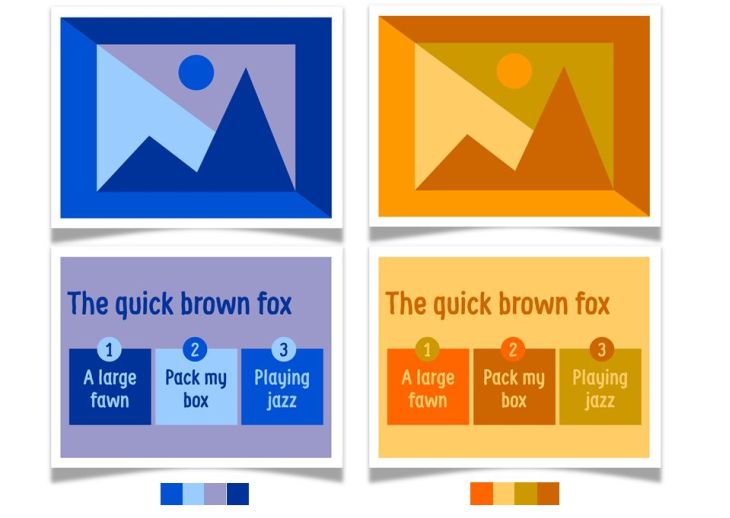
In sum
